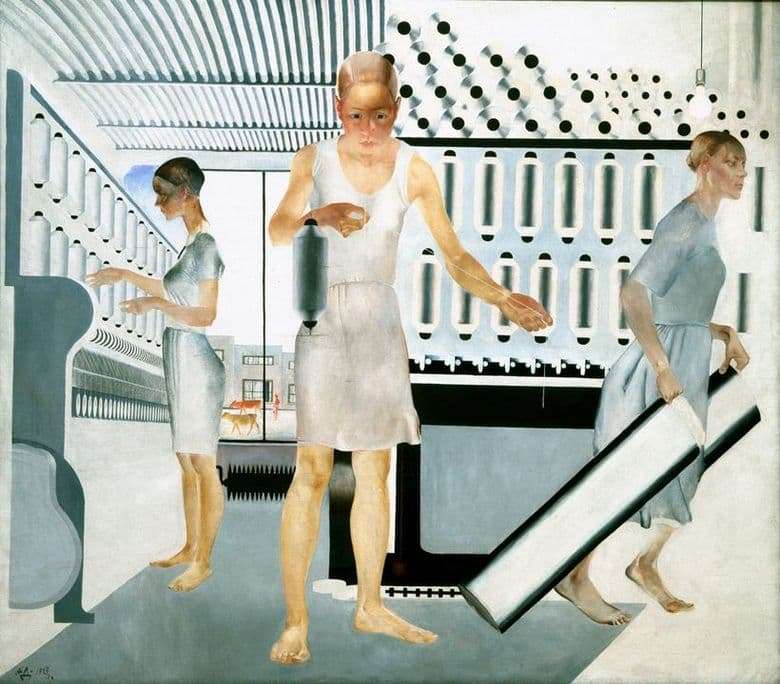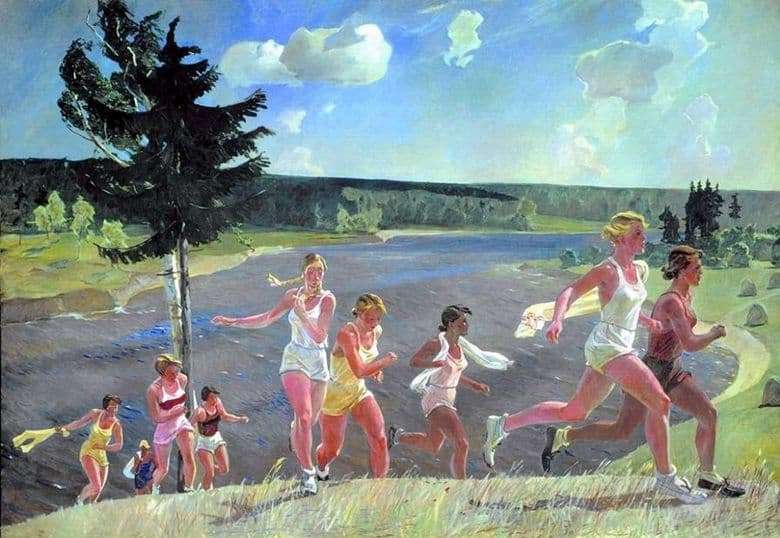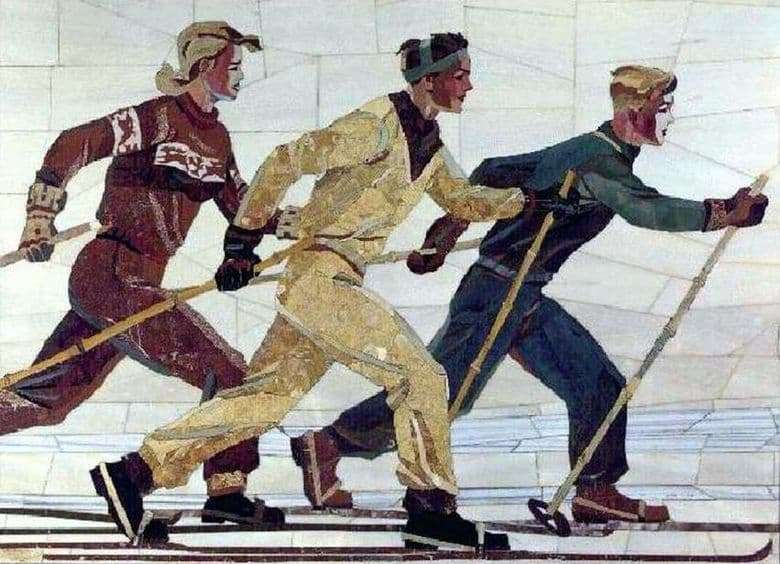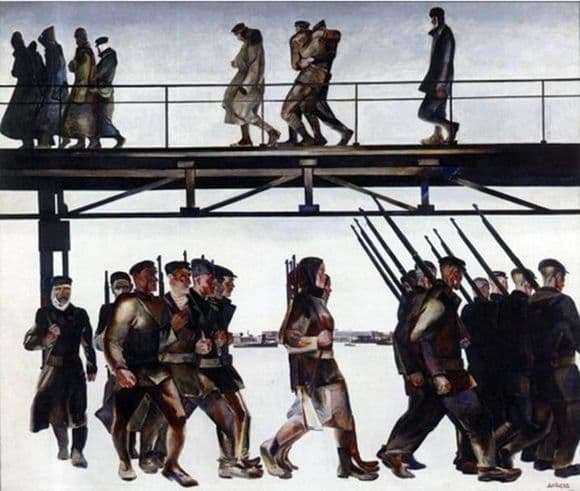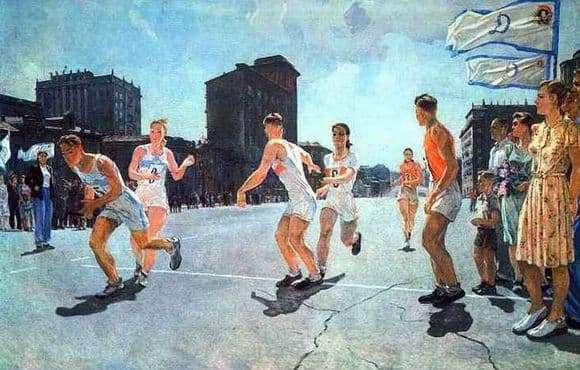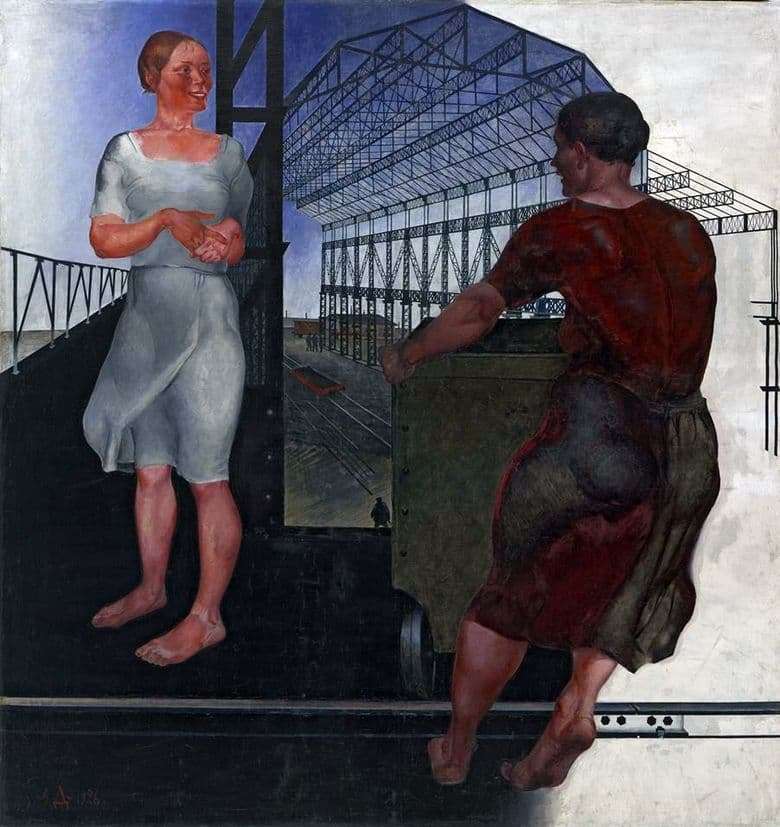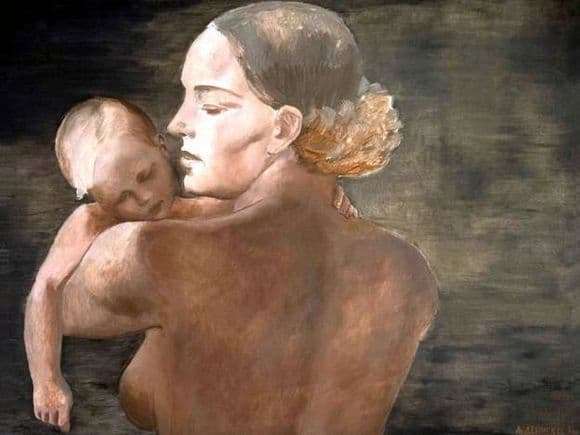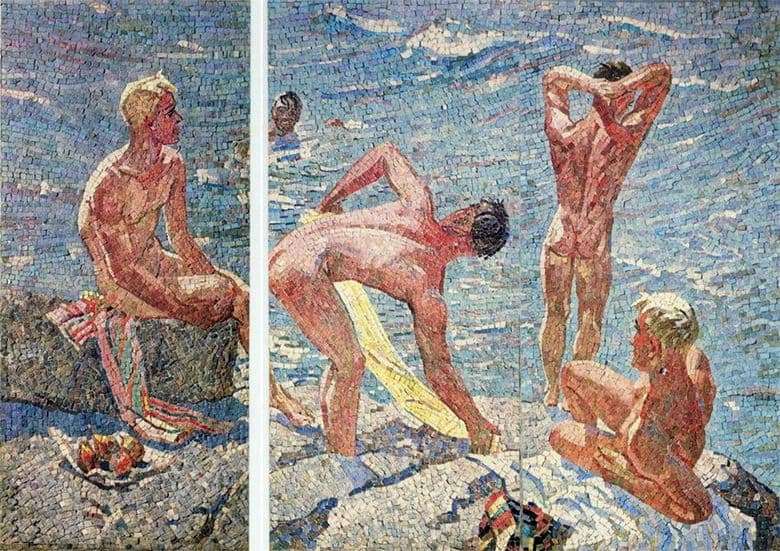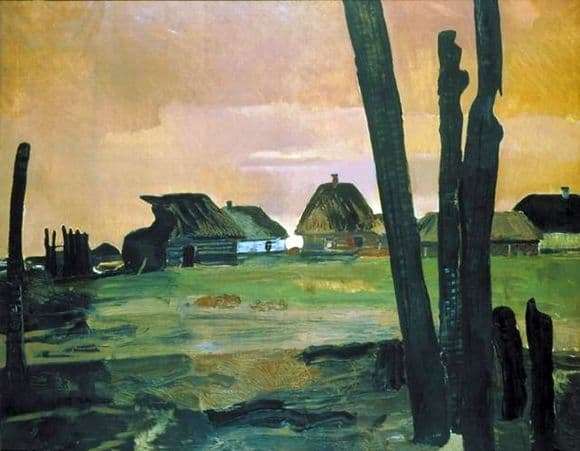
Deineka Alexander Alexandrovich rather deeply conveyed deep suffering. “The burnt village” ideally conveys the full power of their emotions during the Great Patriotic War.
The artist at this time does not remain aloof from these tragic events and continues to write very dramatic, “screaming” long-suffering and significant works in which the struggle of the freedom-loving people of the Soviet Union against fascism is shown.
At this time, all the old places, the artist praises in a sinister and terrible entourage. If the painter used to write urban scenes, now he moves to the countryside, which is saturated with deep pain and suffering. This is how the disfigured native land appears to the viewer.
In this case, there is no doubt about the position of the artist, on this issue. Obviously, how much he feels hatred of the enemy. But with all this, Deineka does not become callous and does not lose humanity.
The picture again and again says that the true art that fits its time remains relevant and immortal. The work makes the spectator’s heart knock, it stirs the thought and gives rise to various associations. Burnt flowers and grasses that sway in the wind, rusty clay slopes and burnt grass dust.
Looking at the deep and penetrating picture of their visionary power, they again and again come up with the thought of the simplicity with which some tactics and tyrants are able to condemn whole continents to the catastrophes of a new power more and more.
Charred tree trunks and emptiness in the village, suggests terrible thoughts that make you think about the past and feel the emotions of not only the artist, but also those people who lived in this village. Suffering, despair, but fortitude and pride are intertwined in this work.
Description of the painting by Alexander Deineka “Burnt Village”
